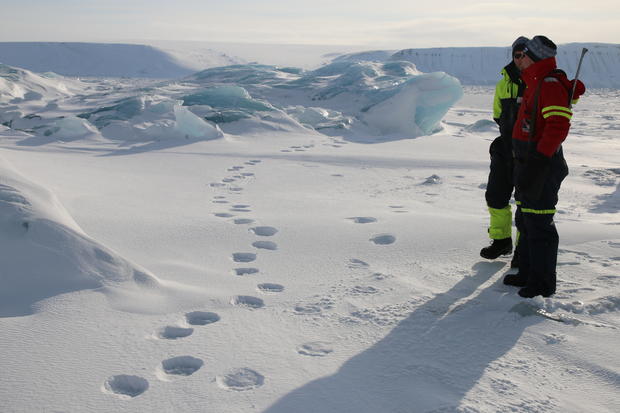Polar bears leave DNA clues behind in snow prints
Polar bears leave behind more than just footprints when they walk across the snow. They also leave behind their DNA. And now, for the first time, scientists can scoop up that DNA and use it to learn more about the animal it belonged to.
Scientists from the World Wildlife Fund (WWF) and the French population genetics firm SPYGEN are collecting the footprint DNA and have extracted enough to begin an analysis.
The first snow print samples were collected in Svalbard, Norway and turned out to contain DNA from a polar bear, a seal, and a seagull. The field team had seen all those animals nearby while collecting samples from what looked like polar bear footprints.
The data could be useful for a number of reasons. Arnaud Lyet, an ecologist and program officer for the WWF, told CBS News in a phone call that "there are increasing numbers of polar bear-human conflicts. In a situation of bear versus village, it changes what you would do if you knew it was one individual versus 5 to 10 bears conflicting with the village."
In a WWF press release, Lyet also notes, "This method would be an invaluable tool for conservation biology."
He explained that the footprint DNA method could help replace more expensive, invasive techniques for tracking the polar bear population in the wild. Ecologists can capture and tag individuals or collect hair and feces samples to analyze DNA. But it is hard to catch or even find many of these animals living in remote areas, and it's rare to find good hair samples. Snow prints, on the other hand, are plentiful and the snow preserves DNA fairly well. This method would save time and money.
Lyet told CBS News that in order for a sample to be useful in identifying individual animals, "the DNA needs to be of good quality. This technique makes sense for small populations" like polar bears or tigers.
Though for now the scientists are focusing on polar bears, they hope to study more elusive Amur tigers and leopards in Siberia next.
The WWF expects to release a report on their findings by the end of the year.
